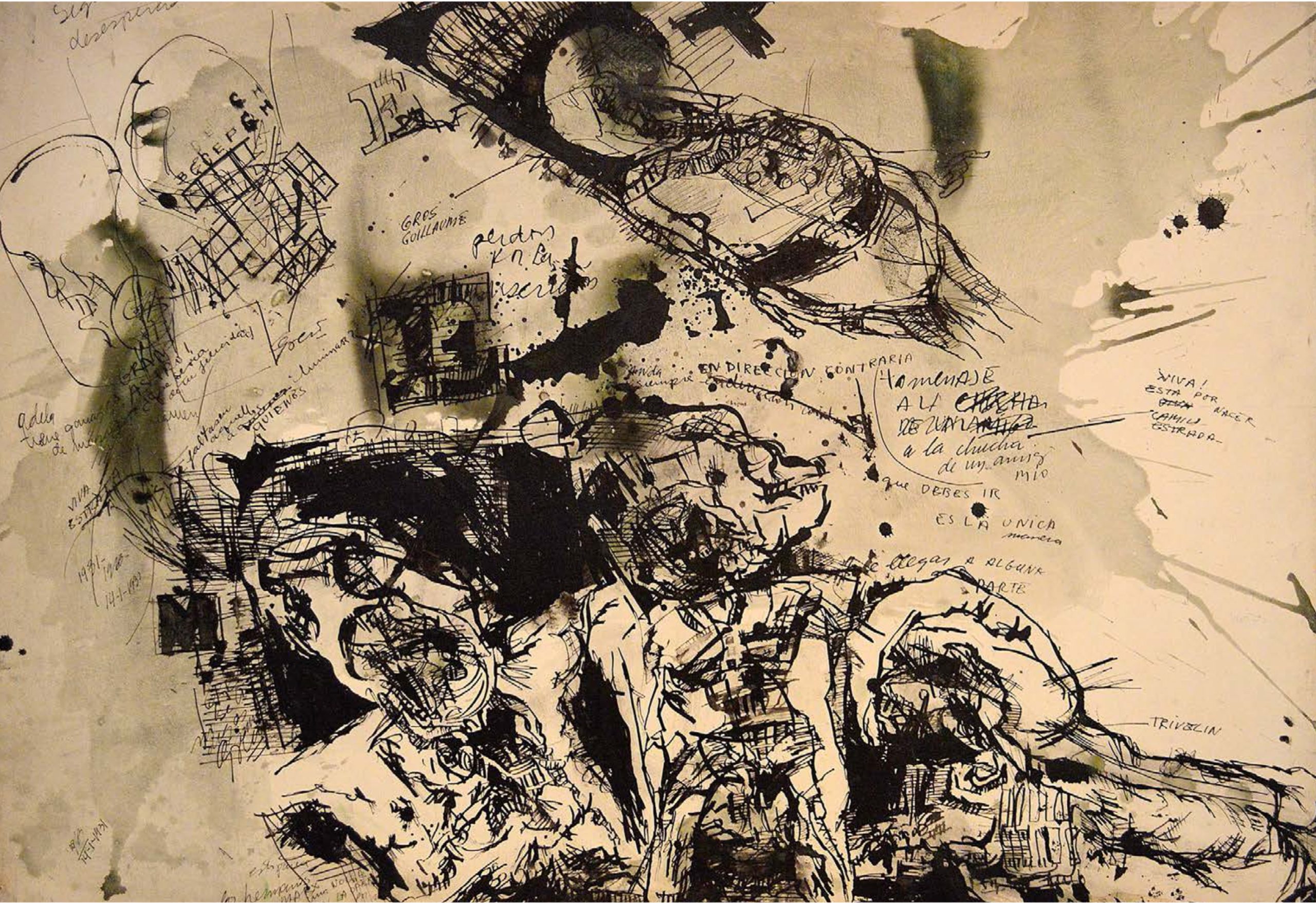Throughout his short career, Alberto Greco (1931, Buenos Aires, Argentina – 1965, Barcelona, Spain) knew how to develop in different creative fields, among which the following stand out: painting, drawing, poetry and literature, evolving towards a line of conceptual research in which the creation of a one-man movement that he himself called Vivo-Dito or Living Art stands out. The Vivo-Dito Manifesto, written by him in 1963, explains his artistic position in which the action of pointing with the finger gives contexts and situations an unforeseen value that can become a work of art. In conjunction with his vivo-ditos, it inaugurated a type of manifestation based on the idea that the work is already done, it is only necessary to point it out. Greco’s entire production reestablishes the art-life equation and vindicates the artist’s vital attitude in the significance of the work of art, conceived as a process, whose radical approach anticipates the artistic developments that will give rise to a paradigm shift in the following years. . Greco achieved an attempt to overcome the artistic space as a language and vehicle of representation, experimenting with new expressive means that propose the dissolution of painting, taking the works to the limit of their physical concretion. Despite having begun his career as a painter and being considered one of the pioneers of informalism in Latin America, he developed diverse and varied concepts that led him to evolve drastically in terms of aesthetics and intention in the work of art. These radical changes began in 1961, until his early death in 1965.
Alberto Greco studied for a short period of time at the Manuel Belgrano National School of Fine Arts and then from 1947 to 1948 he attended the workshops of Cecilia Marcovich and Tomás Maldonado. In 1954 he made his first trip to Europe, where he exhibited for the first time at the La Roue gallery in Paris, France. After his return to Buenos Aires in 1956, he settled in Rio de Janeiro and later in Sao Paulo, Brazil until 1958. In 1959 he joined the Argentine Informalist Movement together with Kenneth Kemble, Enrique Barilari, Olga López, Towas, Fernando Maza, Luis Alberto Wells and Mario Pucciarelli. In 1961, he held an exhibition of paintings in Buenos Aires at the Pizarro Gallery, in which he presented the series Las Monjas.
Shortly after he settled in Paris where he held, in 1962, the First Exhibition of Living Art, “signing” people. In Genoa, in that same year, he published the Manifesto Dito dell’Arte Vivo in Italian. In 1963 he traveled to Piedralaves in Ávila, Spain, where he carried out the series of actions photographed by Montserrat Santamaría. In 1964, he exhibited at the Juana Mordó gallery in Madrid and returned to Buenos Aires where he presented his Live Art experience: Mi Madrid Querido, at the Bonino gallery with the collaboration of the dancer Antonio Gades. In 1965, he settled in Barcelona, where he wrote Besos Brujos, a plastic-performatic work, considered one of his most emblematic pieces. He committed suicide in October of that same year, writing FIN on the palms of his hands and taking barbiturates that triggered his death, before turning thirty-five. In 1991, at the Valencian Institute of Modern Art (IVAM), the largest exhibition dedicated to Greco, curated by the Spanish critic Francisco Rivas; It was later exhibited at the National Museum of Fine Arts in Buenos Aires, Argentina.


 Greco Alberto
Greco Alberto